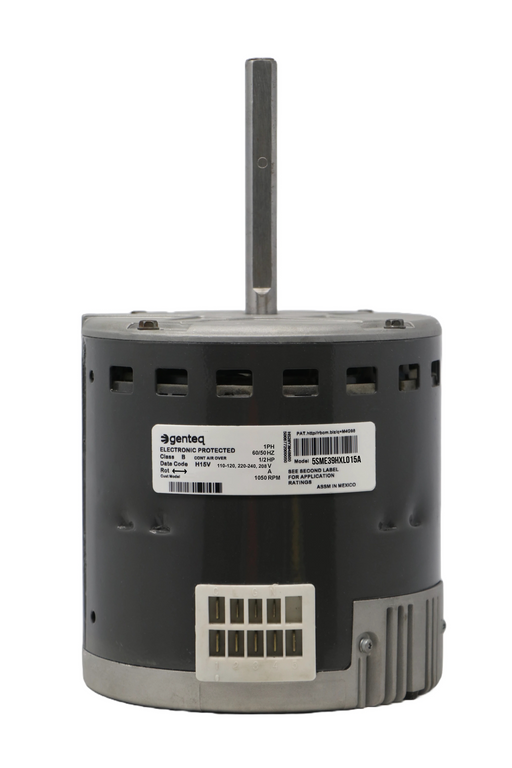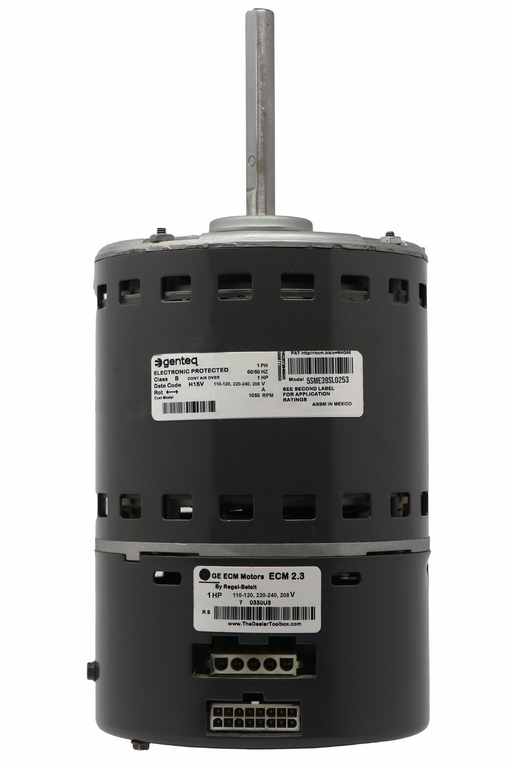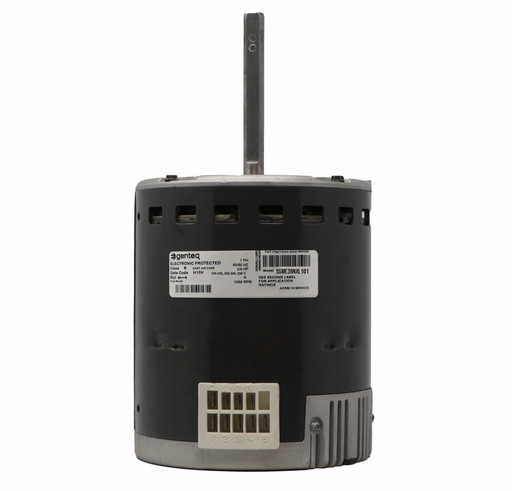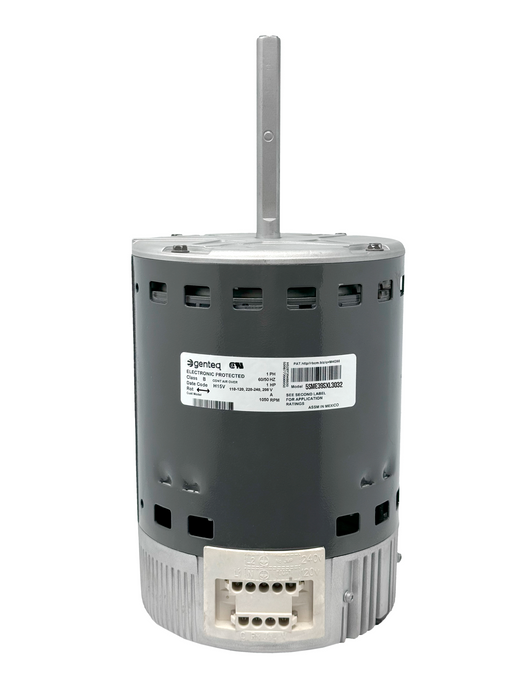(813) 440-8108

How to Install a Blower Motor: A Comprehensive Step-by-Step Guide
Installing a new blower motor is a critical task for maintaining the efficiency and functionality of your HVAC system. Whether you’re replacing a faulty motor or upgrading to a more efficient model, proper installation is essential to ensure your system runs smoothly. This guide provides detailed instructions on how to install a blower motor, including the tools needed, safety precautions, and step-by-step procedures.
In this article, we will cover the entire process of installing a blower motor. From preparation and disassembly to wiring and testing, each step is designed to help you complete the installation safely and effectively. We’ll also discuss when it makes sense to install a new blower motor, the benefits of upgrading your HVAC blower motor, and additional tips to enhance your HVAC system’s performance.
Tools and Materials Needed
Before starting the installation, gather the following tools and materials:
- Screwdrivers (Phillips and flathead)
- Nut driver or socket set
- Wire cutters and strippers
- Electrical tape
- Multimeter
- Motor mounting brackets (if required)
- Safety goggles and gloves
👉🏻 Read More: How to Replace HVAC Blower Motor
Step-by-Step Guide to Installing a Blower Motor
1. Turn Off the Power
Safety first! Ensure the power to your HVAC system is turned off at the circuit breaker. Double-check by attempting to turn on the system to confirm it is completely powered down.
2. Access the Blower Motor
Locate the blower motor in your HVAC system, typically found in the furnace or air handler. Remove the access panel using the appropriate screwdriver or nut driver. Keep all screws or fasteners in a safe place.
3. Disconnect the Old Blower Motor
Carefully disconnect the electrical connectors attached to the old blower motor. Note the position of each wire or take a photo for reference. Use the nut driver or socket set to remove the bolts securing the blower motor in place. Gently slide the motor out of the housing.
4. Prepare the New Blower Motor
Compare the new blower motor with the old one to ensure they are compatible. If the new motor requires mounting brackets, attach them according to the manufacturer’s instructions. Ensure the motor shaft and housing are clean and free of debris.
5. Install the New Blower Motor
Slide the new blower motor into the housing, aligning it with the mounting holes. Secure the motor in place using the bolts and nut driver or socket set. Ensure the motor is firmly mounted and does not wobble.
To confirm product availability please call (813)440-8108. Some items might be in stock but not yet prepared to be shipped.
Remanufactured Motor by United HVAC Motors
2 Year Replacement Warranty (Terms Apply)
Plug n Play - 100% Programmed
Match your Motor Model N...
Remanufactured Motor by United HVAC Motors
2 Year Replacement Warranty (Terms Apply)
Plug n Play - 100% Programmed
Match your Motor Model N...
 Sold out
5SME39HXL015A GE Genteq Blower Motor ECM X13 1/2 HP
Sold out
5SME39HXL015A GE Genteq Blower Motor ECM X13 1/2 HP
5SME39HXL015A GE Genteq Blower Motor ECM X13 1/2 HP
5SME39NXL101 GE Genteq Blower Motor ECM X13 3/4 HP
6. Connect the Electrical Wires
Using your reference notes or photo, reconnect the electrical wires to the new blower motor. Use wire cutters and strippers if needed to trim and strip the wires. Secure the connections with wire nuts and wrap them with electrical tape to ensure they are tight and safe.
7. Test the Connections
Use a multimeter to check the continuity of the electrical connections. This ensures that the wiring is correctly connected and there are no shorts or loose connections.
8. Reassemble the HVAC System
Replace the access panel and secure it with the screws or fasteners you set aside earlier. Make sure all components are properly aligned and the panel is securely in place.
9. Restore Power and Test the System
Turn the power back on at the circuit breaker. Activate your HVAC system and listen for any unusual noises that might indicate an issue. Ensure the blower motor operates smoothly and that air is flowing correctly through the vents.
When to Install a New Blower Motor
Understanding when to install a new blower motor is crucial for maintaining the performance of your HVAC system. Here are some situations where installing a new blower motor makes sense:
- Frequent Repairs: If your blower motor requires frequent repairs, it may be more cost-effective to replace it with a new one.
- Aging System: Blower motors typically last between 10 to 20 years. If your motor is within this age range, consider replacing it to avoid unexpected failures.
- Efficiency Upgrades: Upgrading to a more efficient blower motor can reduce energy consumption and lower your utility bills.
- Noisy Operation: If your current motor is making unusual noises, it might be a sign of wear and tear that warrants a replacement.
- Poor Airflow: Reduced airflow from your vents can indicate that the blower motor is struggling and may need to be replaced.
Additional Tips for Enhancing HVAC Performance
Enhancing the performance of your HVAC system requires consistent attention to several critical maintenance tasks. Regular maintenance is essential; schedule annual maintenance checks with a professional HVAC technician to ensure all components are functioning correctly.
This proactive approach helps to identify and resolve issues before they escalate into costly repairs. In addition, regularly replacing HVAC filters is vital for maintaining optimal airflow and reducing strain on the blower motor. Clean filters prevent dust and debris from accumulating, which can impede system efficiency and airflow.
Duct cleaning is another important aspect of HVAC maintenance. Periodically clean your ductwork to remove dust and debris that can obstruct airflow and reduce system efficiency. This ensures that your HVAC system operates at peak performance and maintains good indoor air quality.
Upgrading to a programmable or smart thermostat is also beneficial. Such upgrades allow for better control over your HVAC system, enabling you to set precise temperatures and schedules, which can result in significant energy savings and improved comfort.
Safety Precautions
Safety precautions are crucial when performing any HVAC maintenance or upgrades. Always turn off the power to your HVAC system before beginning any work to avoid electrical shock. This simple step can prevent serious injuries and ensure a safer working environment.
Additionally, wearing safety goggles and gloves is important to protect yourself from debris and sharp edges that you might encounter during maintenance tasks. It is also essential to double-check all electrical connections to ensure they are secure and properly insulated.
This helps prevent electrical hazards and ensures the reliability of your HVAC system. Finally, always consult the manufacturer's instructions for specific installation guidelines and requirements for your blower motor model.
👉🏻 Read More: Understanding Blower Motor Warranty: What You Need to Know
FAQ
How long should your furnace blower motor last if it's well maintained?
With proper maintenance, a furnace blower motor can last between 10 to 20 years. Regular cleaning, lubrication, and professional inspections are key to achieving this lifespan.
How can I tell if my blower motor needs to be repaired or replaced?
If your blower motor is making unusual noises, producing weak airflow, or causing increased energy bills, it may need repair or replacement. A professional HVAC technician can diagnose the issue and recommend the best course of action.
Can I replace the blower motor myself?
While it is possible to replace the blower motor yourself, it is recommended to hire a professional HVAC technician. Incorrect installation can lead to further issues and may void your warranty.
What is the average cost to replace a blower motor?
The cost to replace a blower motor can vary depending on the motor's type and model, but it generally ranges from $300 to $900, including parts and labor.
Conclusion
Installing a blower motor is a vital task for ensuring the efficiency and longevity of your HVAC system. By following this comprehensive guide, you can perform the installation safely and effectively. Proper installation not only enhances system performance but also prevents potential issues down the line.
Understanding when to install a new blower motor and considering an upgrade for improved efficiency can significantly benefit your HVAC system and overall home comfort.
To explore high-quality remanufactured blower motors that can enhance your HVAC system’s performance, visit our website. Investing in a reliable blower motor can prevent future issues and improve your home's comfort.
5SME39SXL3032 GE Genteq Blower Motor ECM 3.0 1 HP
Remanufactured Motor by United HVAC Motors 2 Year Replacement Warranty (Terms Apply) Plug n Play - 100% Programmed Match your Motor Model N...
View full detailsTo confirm product availability please call (813)440-8108. Some items might be in stock but not yet prepared to be shipped.

 Sold out
5SME39SL0253 GE Genteq Blower Motor ECM 2.3 1 HP
Sold out
5SME39SL0253 GE Genteq Blower Motor ECM 2.3 1 HP
5SME39SL0253 GE Genteq Blower Motor ECM 2.3 1 HP
Remanufactured Motor by United HVAC Motors 2 Year Replacement Warranty (Terms Apply) Plug n Play - 100% Programmed Match your Motor Model N...
View full details


